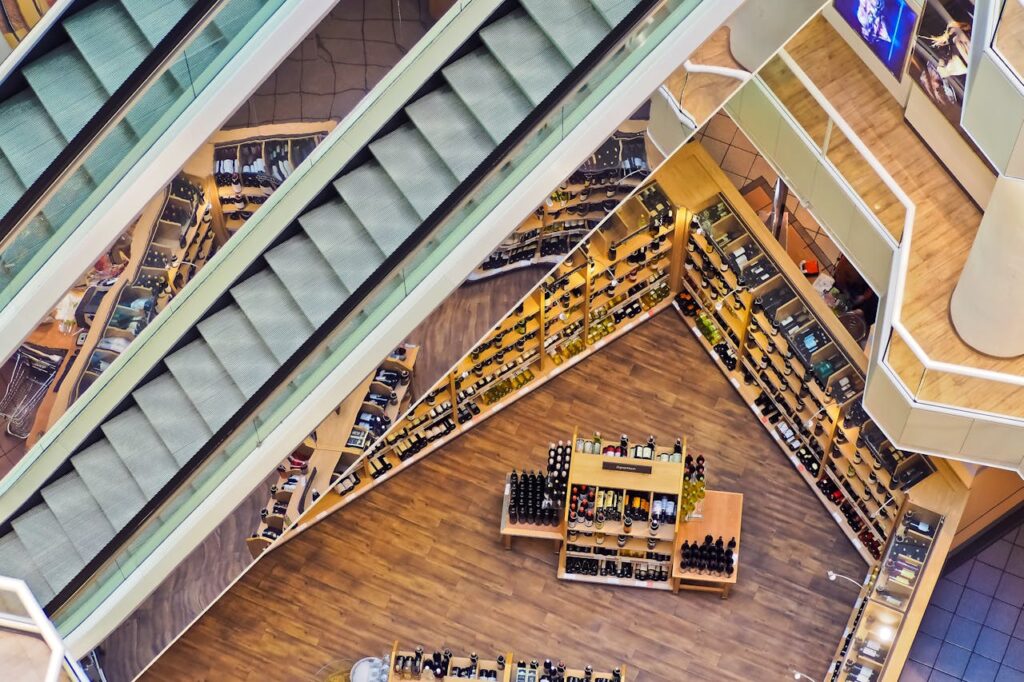
The construction of modern retail centers is a complex process that involves careful planning, collaboration, and execution. These centers are more than just places for shopping; they are multi-functional spaces designed to provide a comprehensive experience for consumers. From initial planning to final construction, every step is meticulously crafted to meet the demands of today’s market. Understanding how these retail centers are built offers insight into the intricacies of urban development and the challenges of creating spaces that cater to a diverse audience. This article delves into the various stages involved in the construction of modern retail centers, highlighting the expertise required and the factors considered to ensure their success.
1. The Importance of Strategic Site Selection
Selecting the right location is a critical first step in building a modern retail center. Developers must analyze various factors, including population density, accessibility, and the surrounding commercial environment. The site must be easily accessible to many potential customers while also being strategically positioned to capture passing traffic. Additionally, developers must consider the competitive landscape, ensuring that the new retail center will stand out and attract businesses. Strategic site selection is the foundation upon which the success of the entire project is built, as it directly influences foot traffic and, ultimately, profitability.
2. Comprehensive Market Research and Feasibility Studies
Before construction begins, comprehensive market research and feasibility studies are conducted to assess the viability of the retail center. These studies involve analyzing demographic data, consumer behavior, and economic trends to determine the potential demand for the center. Developers also evaluate the types of retail and service businesses that would thrive in the area, ensuring a balanced mix of tenants. Feasibility studies help identify potential challenges, such as economic downturns or shifts in consumer preferences, allowing developers to make informed decisions. This stage is crucial for minimizing risk and ensuring that the project aligns with market needs and expectations.
3. Designing for Functionality and Aesthetic Appeal
The design phase of a modern retail center focuses on creating a space that is both functional and visually appealing. Architects and designers collaborate to develop layouts that optimize the flow of foot traffic while providing an inviting atmosphere. The design must accommodate a variety of retail spaces, from large anchor stores to smaller boutique shops, as well as common areas for dining and entertainment. Attention to detail in the design process ensures that the retail center not only meets the practical needs of businesses and consumers but also enhances the overall shopping experience. The aesthetic appeal of the design plays a significant role in attracting customers and creating a memorable environment.
4. Sustainable Building Practices and Materials
In today’s construction industry, sustainability is a key consideration, especially in the development of retail centers. Builders are increasingly adopting eco-friendly practices and materials to reduce the environmental impact of construction. This includes using energy-efficient systems, sourcing sustainable materials, and implementing waste reduction strategies. Sustainable building practices not only benefit the environment but also appeal to eco-conscious consumers, enhancing the center’s reputation. Additionally, incorporating green spaces and natural elements into the design can improve the overall atmosphere and make the center more appealing to visitors.
5. Coordinating with Multiple Stakeholders
The construction of a modern retail center involves coordination with multiple stakeholders, including government agencies, contractors, and future tenants. Developers must navigate zoning laws, obtain permits, and adhere to local regulations, all of which require effective communication and collaboration. Working closely with contractors ensures that the project stays on schedule and within budget, while ongoing dialogue with tenants helps tailor the space to meet their needs. The ability to manage these relationships is critical to the project’s success, as delays or misunderstandings can lead to cost overruns and other challenges.
6. The Role of Technology in Modern Retail Construction
Technology plays an increasingly important role in the construction of modern retail centers. From Building Information Modeling (BIM) to enhance design accuracy to drones deployment for site surveys, technology streamlines the construction process and improves efficiency. Advanced project management software allows developers to monitor progress in real-time, quickly addressing any issues that arise. Additionally, technology enables the integration of smart systems within the retail center, such as energy management systems and digital signage, which enhance the overall functionality and customer experience. Embracing technological advancements is essential for staying competitive in the rapidly evolving retail landscape.
7. Ensuring Compliance with Construction Contractors
Ensuring compliance from construction contractors is crucial for the successful completion of modern retail centers. This involves verifying that all aspects of the project align with local regulations and building codes. Engaging with experienced commercial construction services can streamline this process, as these professionals are well-versed in industry standards and compliance requirements. By maintaining close oversight and communication with contractors, you can avoid potential delays and ensure that the construction adheres to all necessary guidelines. This approach guarantees quality and safety and contributes to the project’s efficiency and success.
Conclusion
The construction of modern retail centers is a multifaceted process that requires careful planning, collaboration, and execution. From strategic site selection to the integration of advanced technology, each step is crucial in creating a space that meets the needs of both businesses and consumers. By understanding the complexities involved in building these centers, one gains a deeper appreciation for the expertise required to bring such projects to fruition. Modern retail centers are more than just shopping destinations; they are dynamic environments that reflect the latest trends in design, sustainability, and technology. As the retail landscape continues to evolve, the methods used to construct these centers will undoubtedly adapt to meet the changing demands of the market.


